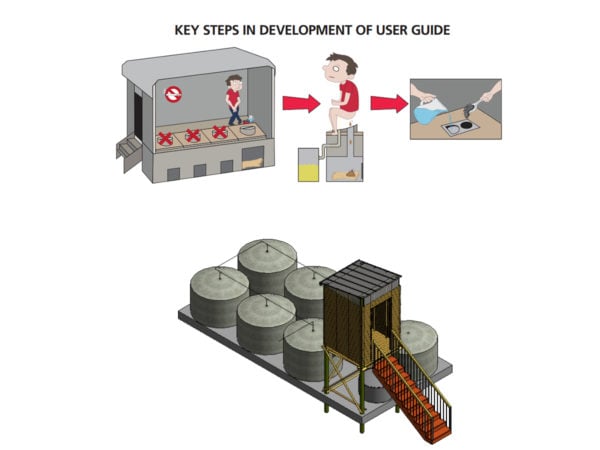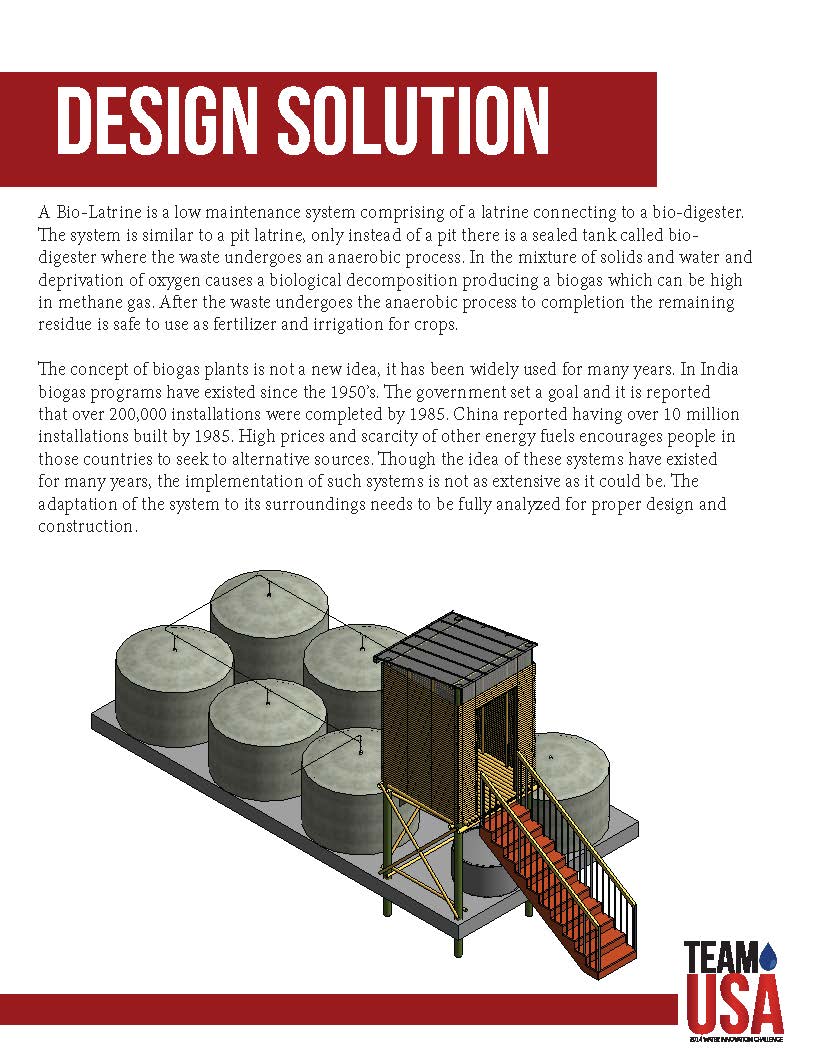Water Innovation Challenge
THE DESIGNS AND FEEDBACK FROM THE WATER INNOVATION CHALLENGE
By presenting feedback on the design work of the inaugural Water Innovation Challenge, 2014, Healthabitat acknowledges the skill and effort contained in the sanitation design ideas presented by both Team USA and Team Australia in Singapore. The following comments are intended to inform and prompt more thought from the teams and those interested in this area of work. HH has chosen to comment on the Bangladesh design work only at this stage (schemes for Nepal were also presented).
We invite further comment and discussion through the website contact point.
Sincere thanks to all those involved in the teams, support staff and home town research and development specialists.
See the full design proposals by clicking here to download the files.
Thoughts on Team USA’s Bangladesh design solution
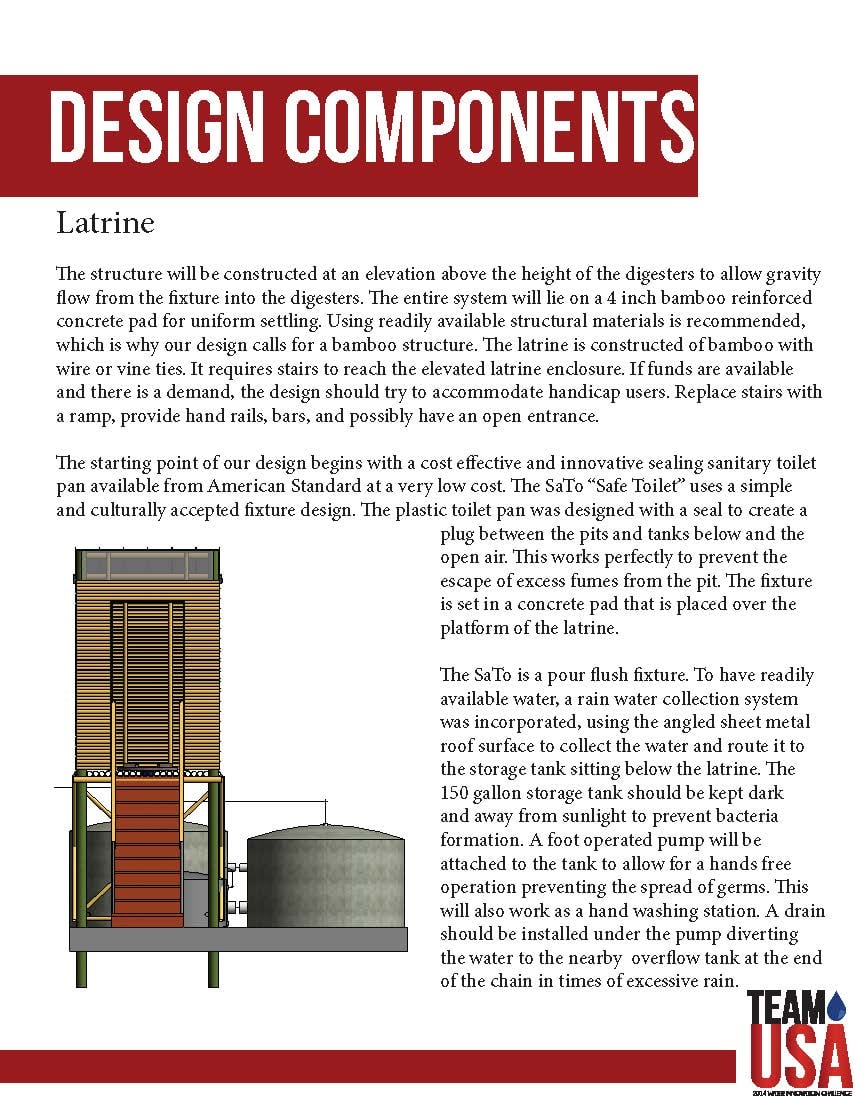
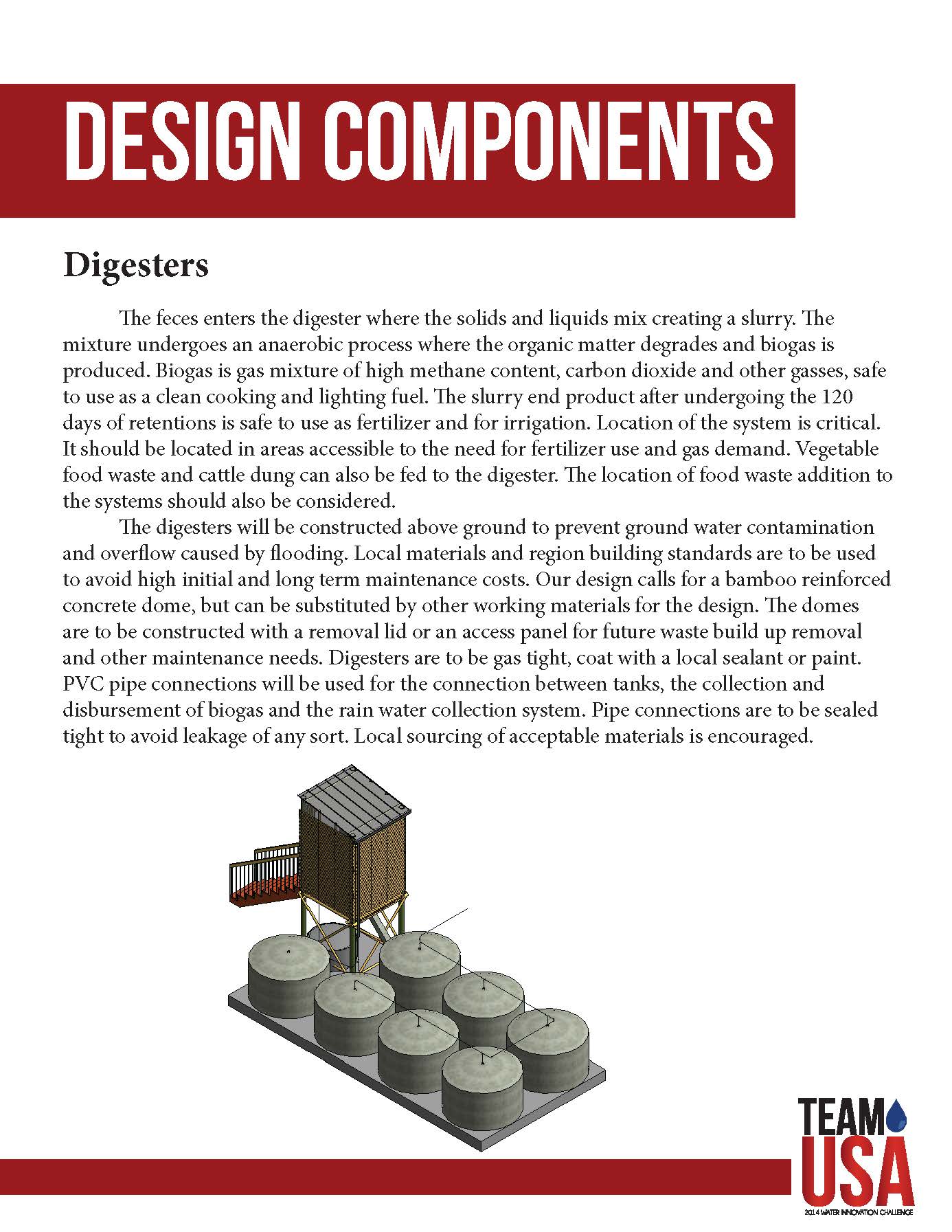
- The solution does collect human waste from the ground and separate it from the water table,
- the scale of the digesters appears far too large for the number of people served, building the volumes involved will incur a high construction cost and would require large volumes of waste and time to generate gas pressure,
- the digesters will occupy a large area of land and poor villagers have little land – the idea presented that people could live above the digesters is a good one – but still, a large area of productive agricultural land is lost,
- there was no clear way indicated to remove the final waste product from the digesters, the hatch idea suggested in the final presentation would release gas and tanks would need to be isolated, the waste would accumulate in all the tanks so many hatches would be needed,
- the dual pipe interconnection between all the tanks implies the waste is liquid enough to flow between the tanks and this would mean no progressive treatment over time, solid waste would start settling in the first tanks but would have ‘new’ waste flooding over it constantly,
- solid waste would settle in the first few tanks, and progressively all the tanks, and they all would require access for cleaning,
- the height of the toilet building could be reduced without impact on the current design and make the access and hand wash water pumping lower, easier and less costly to construct,
- Privacy issues, particularly for young women, when villagers are seen to be ‘ascending the stairs’ to the toilet
- the bamboo of the toilet building walls would need better weather protection (with the roof or render) to prevent decay,
- the columns that run into the ground would decay (if they are timber as indicated in parts of the specification),
- is there a great health need for biogas in Bangladesh? Cooking is usually done in a well ventilated outside, roofed place,
- the detailing of the toilet area (wall surfaces, floor wall junctions, grading of the floor) must consider the high prevalence of gut problems and diarrhoea by making sure it is easy to clean the inside of the cubicle to at least to 900mm (3’) from the floor. The bamboo lining to the inside walls will be hard to clean.
- Ensure all the cleaning water is drained from the unit and safely treated and does not escape untreated to the outside ground.
Thoughts on Team Australia’s Bangladesh design solution
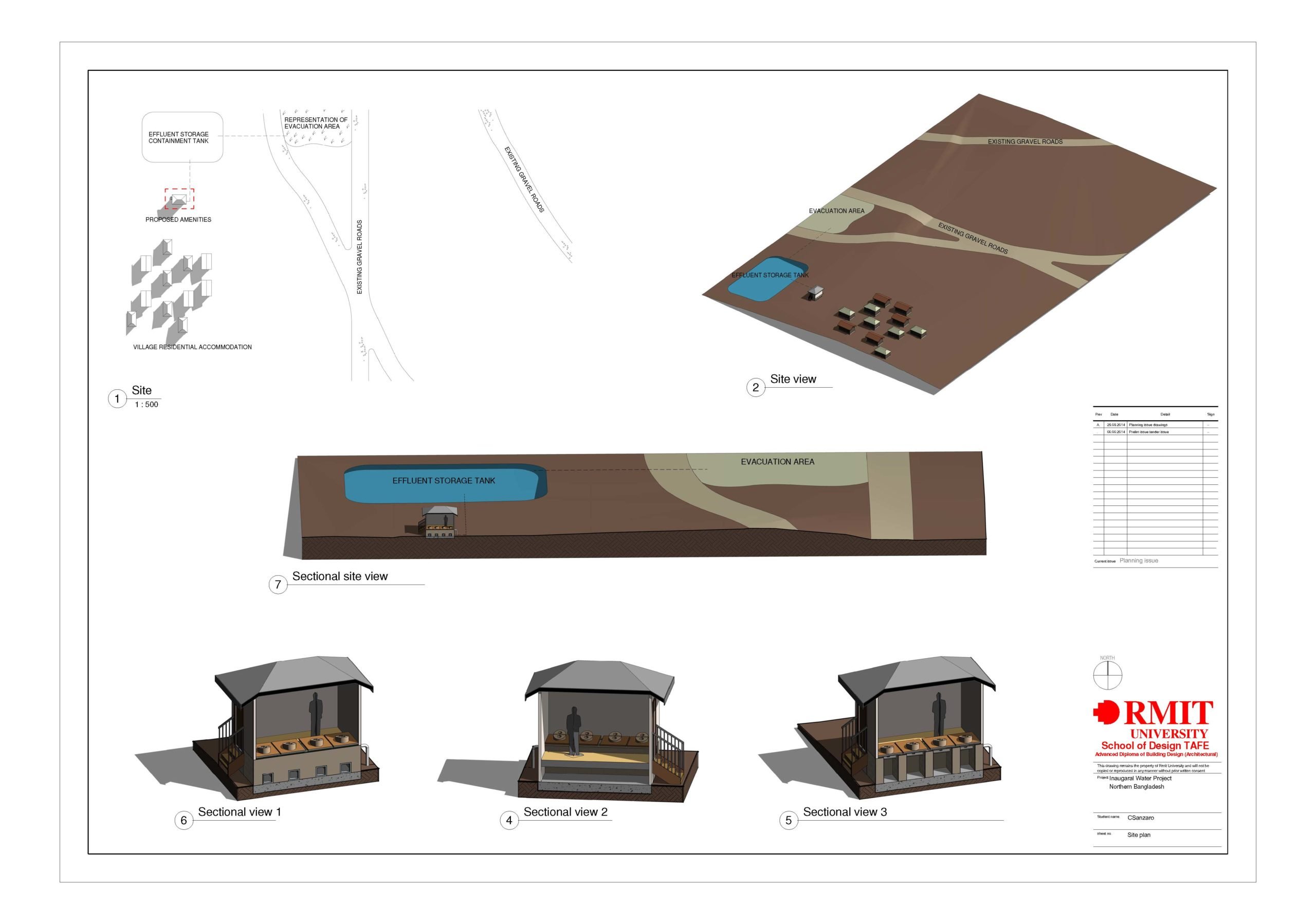
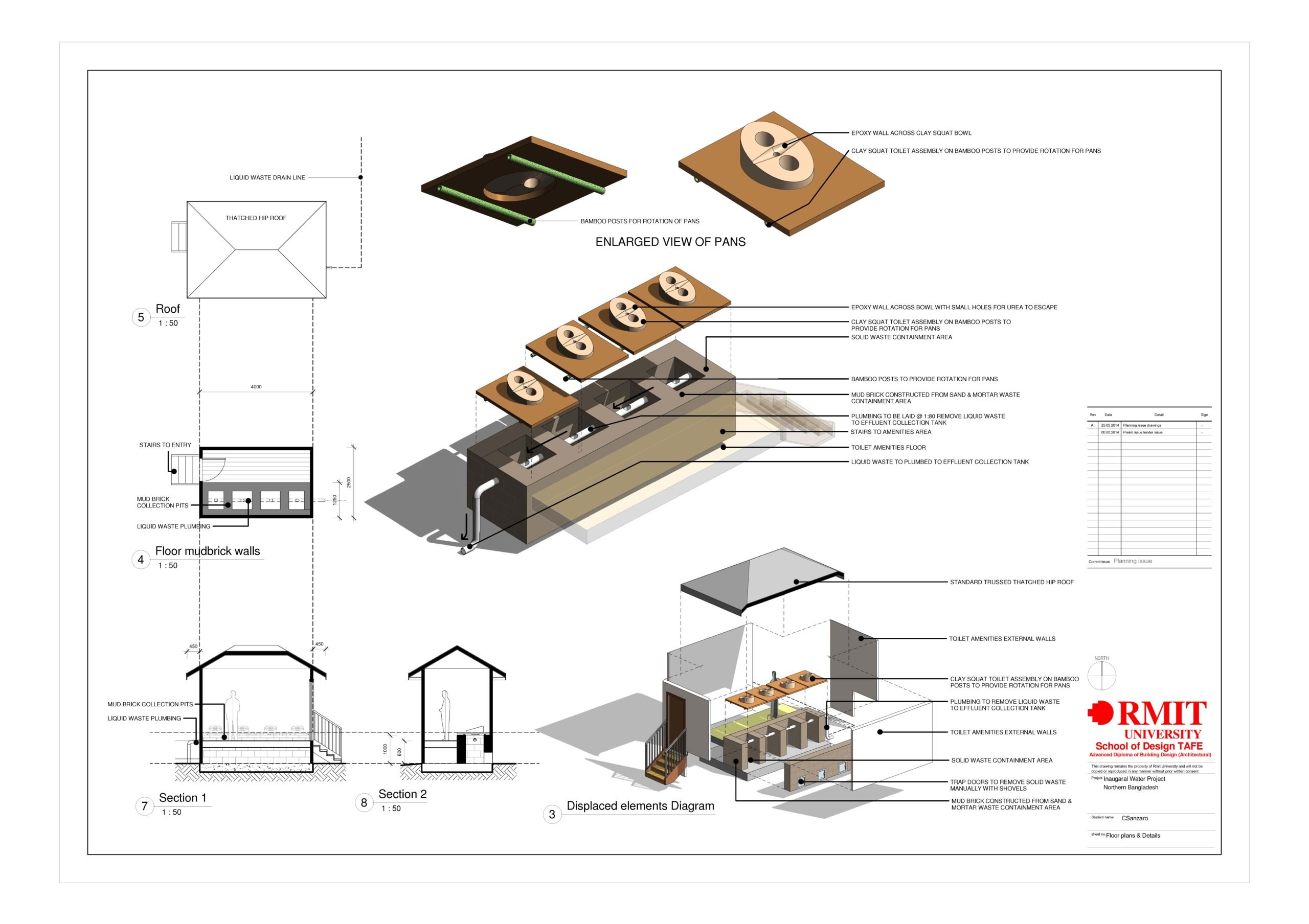
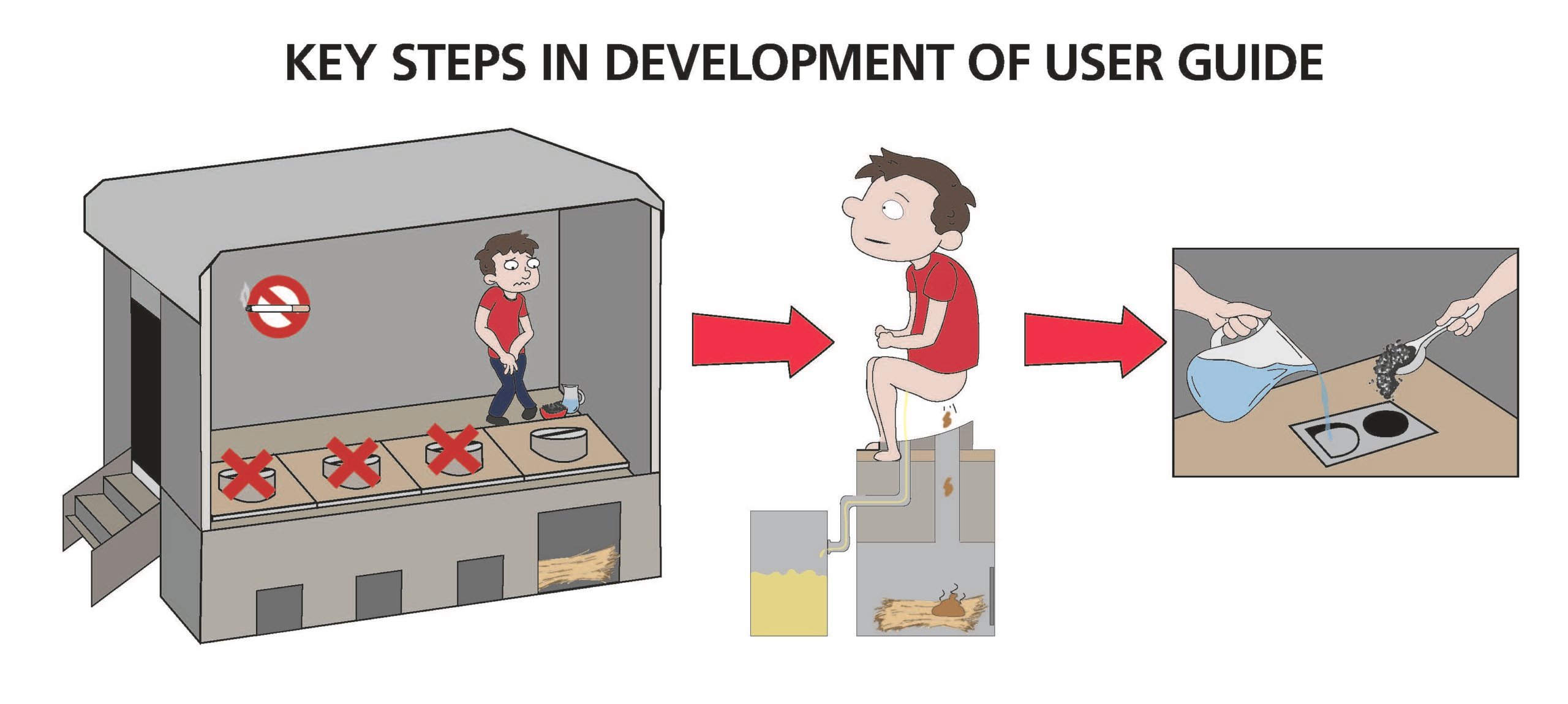
- The solution collects human waste,
- the separation of liquid and solid waste at source (as indicated in the diagrams) will not guarantee that the liquid waste is uncontaminated. Therefore, the release of this liquid directly into the reed bed/pond remains a real health hazard,
- the local custom of using water for washing after toileting will further, regularly contaminate the liquid waste stream with solid waste and if this liquid stream is not treated it will greatly increase the health hazard,
- the ability to flood or dilute the pond/reed bed (either by adding stored water OR rainwater) will not improve the water quality it will simply spread more contaminated water further,
- the reed bed system will not treat waste, rather is will remove excess nutrients from treated wastewater and this treatment needs to be incorporated into the design,
- ultraviolet light (from sunlight) could have a sterilising effect on the pond/reed bed water if it were shallow BUT during the wet season, when the problem of contaminated water is greatest, cloud cover will limit the available daily sunlight, the reeds also limit the impact of UV radiation by shading the water,
- the scale/footprint of the toilet unit could be reduced, it will occupy an area of land that could be used for agriculture – poor villagers have little land,
- the communal nature of the unit will need a high level of village management and the proximity of houses and families may make this design unworkable, think about who will maintain the unit and be responsible for daily cleaning and maintenance and will they be paid?
- if the whole unit provides only one working toilet place (as the other 3 are resting the waste material) the total number of people served will need careful consideration, particularly if it is a communal toilet,
- the costings are not accurate and items noted in the specification are not included (or cannot be identified in the costing)
- a handwashing point is essential as a third of the health gain from having access to a working toilet comes from adequate handwashing being close to the toilet,
- the detailing of the toilet area should acknowledge the high prevalence of gut problems and diarrhoea by making sure it is easy to clean and all cleaning water is safely treated and does not escape to the ground’s surface.
Go to Housing for Health the Guide for more detailed information
www.housingforhealth.com
Specifically:
http://www.housingforhealth.com/housing-guide/flush-toilets/


